The connection to colors and gender is as interesting as the discussion of nature versus nurture. The Bentley Bentayga we recently wrote about mentioned the allure and revulsion men have with pink. In regards to pinks to which men gravitate, our Pick of the Day stands tall among Mopar men—it is known by the internal code of FM3 but, for our purposes, it is called Panther Pink. The 1970 Dodge Super Bee two-door hardtop listed for sale on ClassicCars.com by a dealership in Celeste, Texas, is painted in this very rare hue.
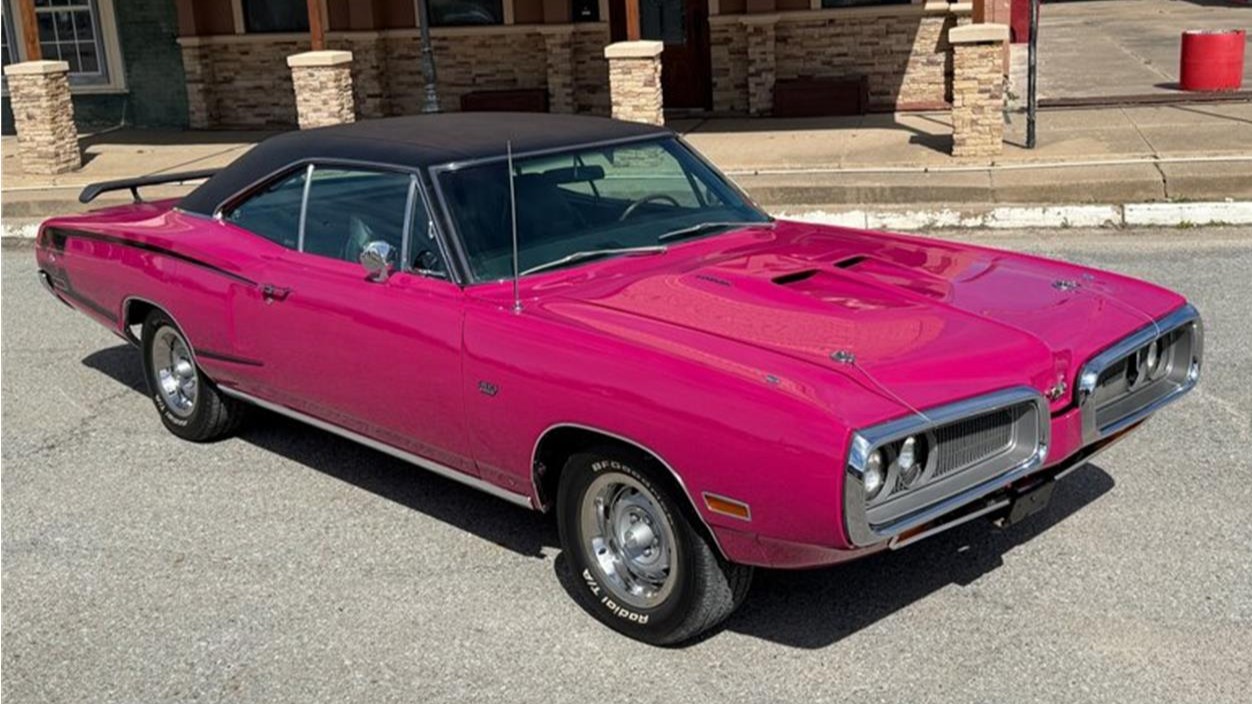
Sure, men are not averse to pink—visit a country club to bear witness—and sometimes there’s a reverse-masculinity effect with the color, as if “I’m so secure with my masculinity that I can rock it!” Was that the idea that the Chrysler Corporation had when it introduced FM3 in January 1970? Following Chrysler’s color coding methodology at the time, “F” stood for 1970, “M” was magenta, and “3” was the lightness of the color, with smaller numbers indicating a lighter shade. Of course, it wasn’t just men who bought cars, and that’s not to suggest the color was targeted to women, though there’s no marketing info I’m aware of that shows the target market. It would not be surprising to learn that most of the cars ordered in FM3 were sales bank cars or cars ordered by dealerships to tout the latest and greatest features from the Chrysler Corporation.
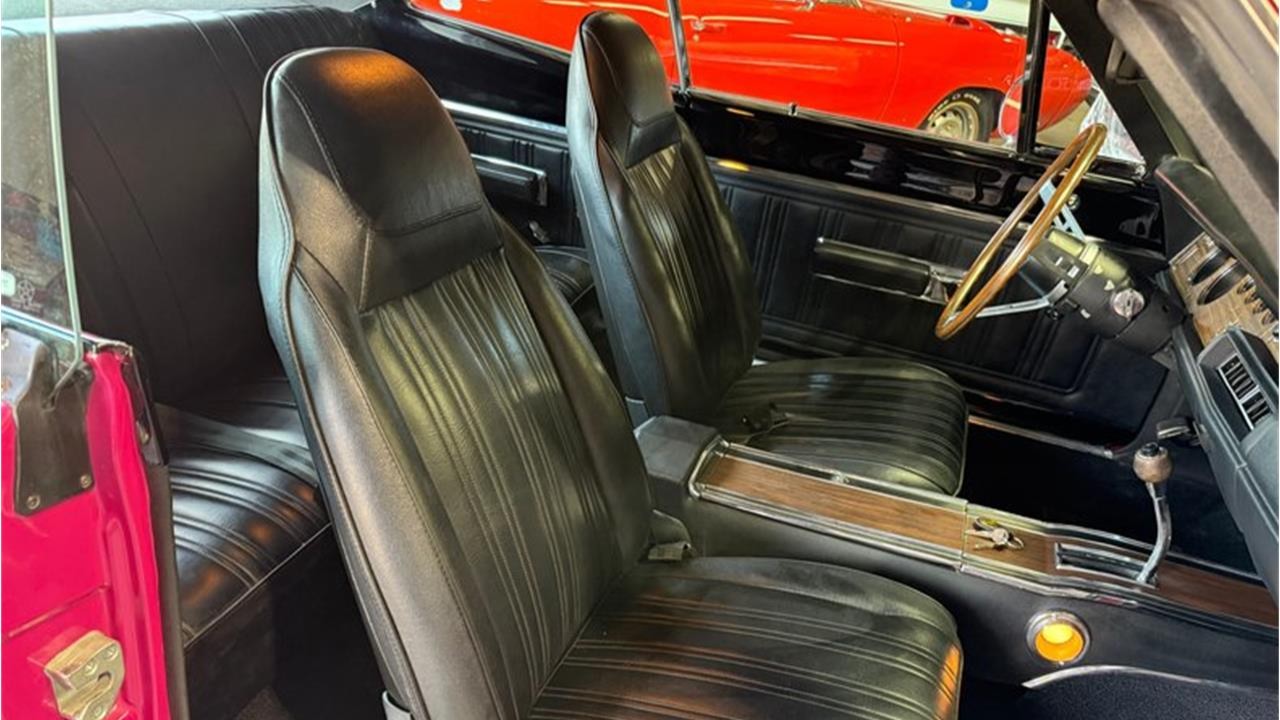
FM3 was given the name “Panther Pink” at Dodge, and “Moulin Rouge” (named after the famed French cabaret) at Plymouth. The color was available on A-body compacts, B-body intermediates, and E-body pony cars; it was not available on C-body full-size cars, though at least one is known to have been special-ordered. (There also was a Magenta offered in Australia in 1971-72, affectionately known as “Penta Magenta,” but accounts peg it as a slightly different color.)
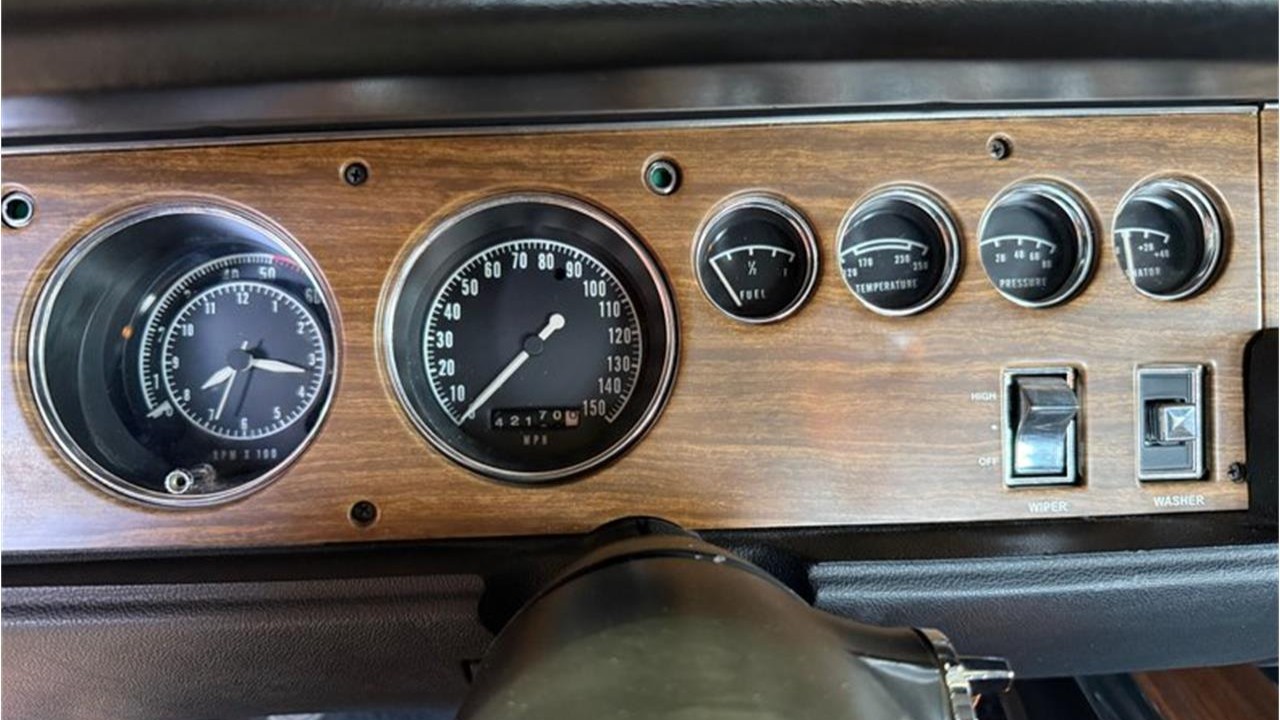
Nineteen seventy was an interesting model year for Dodge as the intermediate Coronet was in the final year of a three-year cycle. Rather than spruce up the Coronet for one more model year, Dodge restyled it with an odd front end that employed a loop bumper that had been taking hold at the division; also new was more prominent Coke-bottle rear fenders. For the Scat Pack Coronets, the Super Bee employed one of two striping choices, with a “C-stripe” being a new addition to the traditional Bumble Bee; for the Coronet R/T, the formerly optional M46 simulated brake scoops were now standard, and it was no longer available as an option for the Super Bee.
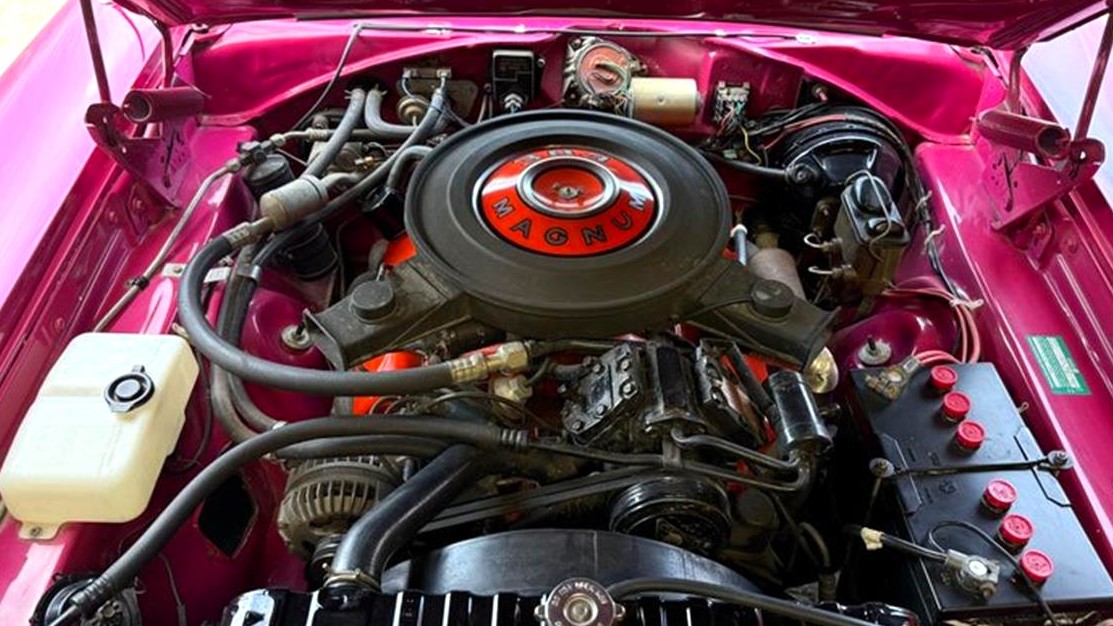
The Super Bee continued to feature a standard 335-horsepower 383, but now a three-speed manual transmission replaced the four-speed that had been standard since 1968. This downgrade kept the creeping base price palatable to the youths bagging groceries. The 440 Six Pack returned, now a conventional engine option instead of the maxed-out A12 package introduced mid-year 1969. Of course, the 426 Hemi remained the top option.
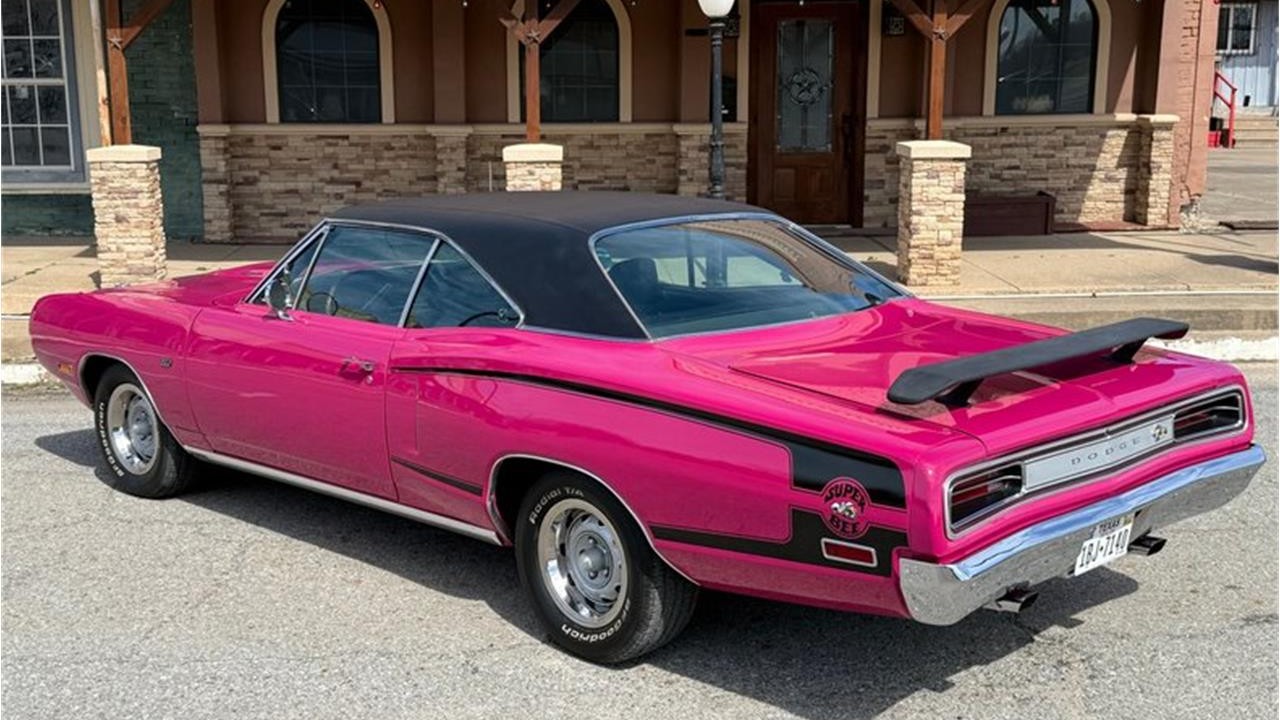
This rotisserie-restored 1970 Dodge Super Bee two-door hardtop is one of 40 U.S.-spec cars painted Panther Pink from the factory. It is complemented by a black vinyl top and “V6X” longitudinal side stripes (the C-stripe that was added for 1970, as mentioned above). Other features include black interior with front bucket seats, console, automatic, air conditioning, and power steering and brakes. I spy a tachometer, Rallye wheel, remote driver-side mirror, AM radio, and rear spoiler, the latter appearing to have been added. “Original fender tag is intact,” claims the seller. “Great-running and -driving car—ready to cruise!”
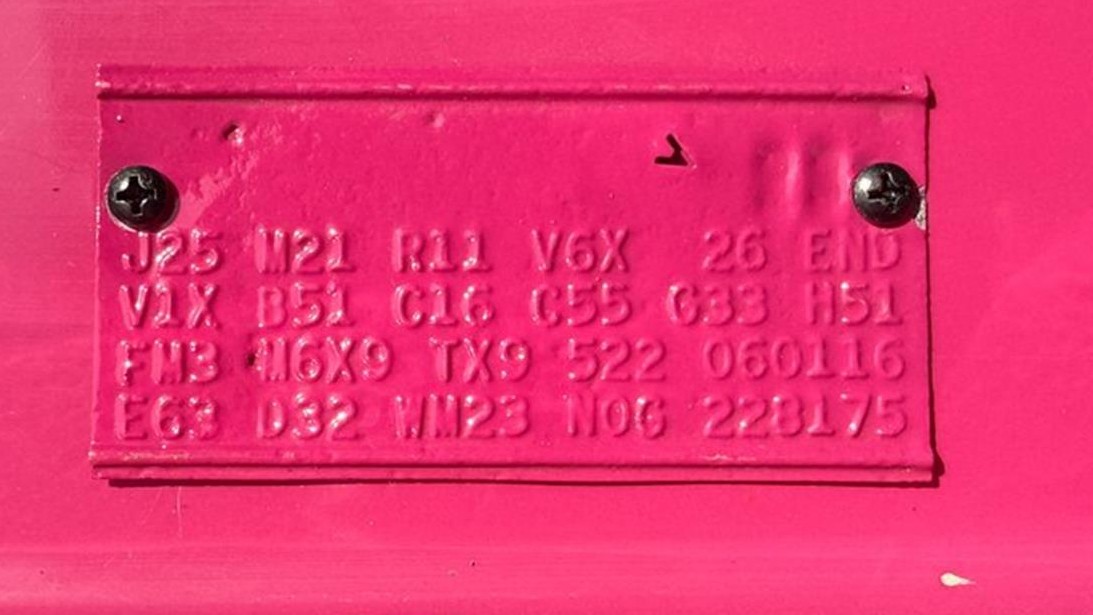
While it may be sexist to suggest this is a car for a man who’s secure with himself, what’s truly worth pointing out is that any FM3 Mopar will command a premium—this fuchsia is the color of gold among Mopar fans. To be tickled pink, it will cost you $128,500.
Click here to view this Pick of the Day on ClassicCars.com

